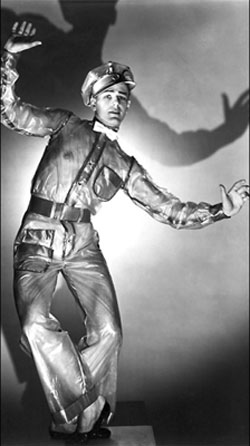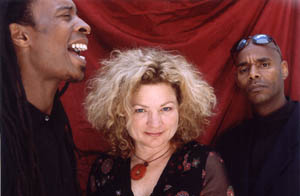[Ed. note: Polly Moller is not just busy telling you about concerts like the one below — while she’s out there pushing for the other guy, I want to mention the she herself has what looks like a great gig, with Pamela Z and Jane Rigler, May 17th at the Royce Gallery, 2901 Mariposa Street (between Harrison & Alabama), SF. tickets are $10, and you can see more here. Go, Polly! …OK, on with the show…]
 Sequenza21 readers are a quirky and unpredictable bunch. But I’m willing to bet that any of them who show up on Wednesday, May 20, Friday, May 22, or Saturday, May 23 at Davies Symphony Hall in San Francisco will not spend the first half fidgeting around, waiting for the marvelous Yuja Wang to take the stage, so they can text their friends about what kind of gown she’s wearing. No, our readers will be on the edges of their seats ready for the world premiere of The B-Sides by Mason Bates!
Sequenza21 readers are a quirky and unpredictable bunch. But I’m willing to bet that any of them who show up on Wednesday, May 20, Friday, May 22, or Saturday, May 23 at Davies Symphony Hall in San Francisco will not spend the first half fidgeting around, waiting for the marvelous Yuja Wang to take the stage, so they can text their friends about what kind of gown she’s wearing. No, our readers will be on the edges of their seats ready for the world premiere of The B-Sides by Mason Bates!
The internet got a taste of Bates’ new work on April 15th, when the YouTube Symphony Orchestra, led by San Francisco’s own Michael Tilson Thomas, played the final movement, “Warehouse Medicine”, in Carnegie Hall. Bates explains in the program notes that his five-movement piece is “informed by the grooves of electronica as well as the modern masters of orchestral sonority, and might also be said to inhabit the ‘flipside’ of the symphonic world – a place where drum-n-bass rhythms meet fluorescent orchestral textures.”
The B-Sides is dedicated to MTT, who commissioned it. The maestro invited the composer backstage during a concert intermission in November 2007, “between Tchaikovsky and Brahms,” Bates recalls. “He suggested a collection of five pieces focusing on texture and sonority—perhaps like Schoenberg’s Five Pieces for Orchestra. Since my music had largely gone in the other direction—large works that bathed the listener in immersive experiences—the idea intrigued me. I had often imagined a suite of concise, off-kilter symphonic pieces that would incorporate the grooves and theatrics of electronica in a highly focused manner.”
Something else Sequenza21 readers are likely to do, if they attend the Friday, May 22 show, is stick around for Davies After Hours. It’ll be hard to resist, with Bates morphing into his alter-ego, DJ Masonic, and joining SF Symphony Resident Conductor Benjamin Schwartz to host a hybrid concert/reception they call Mercury Lounge: Mercury Soul Comes to Davies. DJs and chamber ensembles will offer their reflections on the night’s concert…which oh, by the way, includes Sibelius’ Symphony No. 4 in A minor, Opus 63.
Tickets are available online, and also by phone from the San Francisco Symphony Box Office at (415) 864-6000.

 When I was an undergrad at San Francisco State University in the late 1980s, we didn’t have a new music ensemble-in-residence. Like many music majors then and now, we relied on our fellow students to perform our pieces, and didn’t have a professional-level new music group serving as role models on campus.
When I was an undergrad at San Francisco State University in the late 1980s, we didn’t have a new music ensemble-in-residence. Like many music majors then and now, we relied on our fellow students to perform our pieces, and didn’t have a professional-level new music group serving as role models on campus. Dance is always about music, and music is, more often than not, about dance. But how does dance animate music, and music animate dance? This seemed to be the central question when I caught Program 1 of the San Francisco Ballet’s 75th anniversary season at the War Memorial Opera House February 9th. Classical ballet and modern dance sometimes plays against and even ignores the music’s rhythmic structure which would never happen in the deservedly popular Dancing With The Stars. But we rightly or wrongly cut the highbrow forms a bit more slack.
Dance is always about music, and music is, more often than not, about dance. But how does dance animate music, and music animate dance? This seemed to be the central question when I caught Program 1 of the San Francisco Ballet’s 75th anniversary season at the War Memorial Opera House February 9th. Classical ballet and modern dance sometimes plays against and even ignores the music’s rhythmic structure which would never happen in the deservedly popular Dancing With The Stars. But we rightly or wrongly cut the highbrow forms a bit more slack.  Extra, extra!… Fearless woman seizes her day!…
Extra, extra!… Fearless woman seizes her day!…
 Milan, where he was born in October 1965. Formenti has been dubbed ” a Glenn Gould for the 21st century ” by The LA TIMES’ Mark Swed, which probably refers to his Gould-like obsessive-compulsive absorption in the music he performs, as well as the widely divergent composers he programs. These traits were certainly center stage in the last of 3 San Francisco Piano Trips programs — the first consisted of Kurtag and 17 other composers — he gave at the De Young Museum’s Koret Auditorium in Golden Gate Park. Would that the museum were beautiful, to say nothing of site specific. Instead its bland forbidding facade sits shopping mall generic — one half expects to see a banner saying “SALE” on it — and its interior has a funny model home smell as if nobody ever lived there or would want to.
Milan, where he was born in October 1965. Formenti has been dubbed ” a Glenn Gould for the 21st century ” by The LA TIMES’ Mark Swed, which probably refers to his Gould-like obsessive-compulsive absorption in the music he performs, as well as the widely divergent composers he programs. These traits were certainly center stage in the last of 3 San Francisco Piano Trips programs — the first consisted of Kurtag and 17 other composers — he gave at the De Young Museum’s Koret Auditorium in Golden Gate Park. Would that the museum were beautiful, to say nothing of site specific. Instead its bland forbidding facade sits shopping mall generic — one half expects to see a banner saying “SALE” on it — and its interior has a funny model home smell as if nobody ever lived there or would want to.